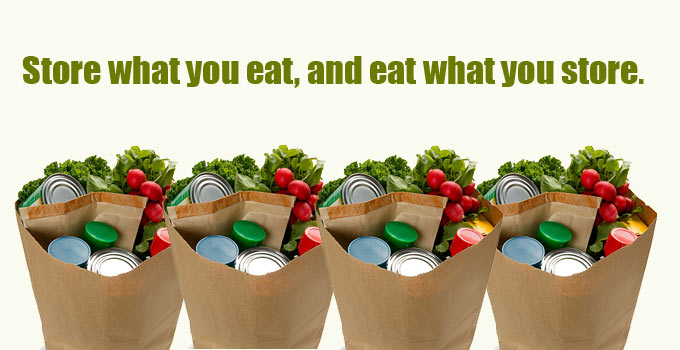Store The Foods That You Would Normally Eat
Although known by most preppers, it is an important note for newbies:
With regard to extra food storage for preparedness, first do this:
Store the foods that you would normally eat.
Think about it, if the time comes when you need to eat the food that you have stored away for preparedness, it would be convenient and less disruptive to have an inventory of the same foods that you would normally eat day to day.
Some people when first getting started with food preparedness will buy foods that have a reputation as typical survival food such as MRE’s (Meal Ready to Eat), or buckets of wheat, grain, rice, and beans.
Survival Food Most Common In Preppers Deep Pantry Storage
Rice & Beans, A Survival Combination
There’s nothing wrong with that (in fact it’s highly advisable to include these and others as part of a diversified food storage), except maybe it shouldn’t be the first foods that you store when getting started.
Although these items will provide lots of calories, take up relatively little space, and store for quite a long time if kept properly, they are probably not the foods that you normally eat every day.
Calories per pound of Rice, Beans, Wheat
Your body may have a hard time adjusting to such a different diet and it will probably take some time to adjust. You may also be challenged to know what to do with a sack of wheat or grain to make it palatable, or to combine with other ingredients for a better balance of taste and nutrients.
The most practical solution to build up a usable and tasty supply of long term food storage is to buy a few more of the items that you normally eat day-to-day during each visit to the grocery store.
The word, ‘usable’, is of key importance. The best food storage system is one which you are using and rotating your inventory! So, if you buy foods that you normally eat, then you can start a system of rotating out, and then back in to your food storage supplies. That way, your foods will not expire and go to waste after a period of time.
Use-by, Best-by, and Sell-by Food Expiration Dates
If all you do is buy a large quantity of food and store it ‘just in case’ you need it, then at some point in time it will all expire and be wasted. Why not actually eat the food that you store and rotate the stock in and out? This way you will have a supply of food that will always be good, good because it is not expired, and good because it is what you eat and therefore tastes good!
The point is to get started today with food storage. Even if you begin storing a little at a time, it will start the process of preparedness for you and your family.
4 Weeks
‘Typical’ disruption scenarios that would require that you have extra food on hand are fairly short lived, so a food storage supply of 4 weeks will get you through most of them (regional power outage, storms, etc…).
3 Months
However if you develop a good system of food rotation, a much larger reserve is easily established, and will give you great peace of mind knowing that you will not be as dependent on the systems of food production and distribution that bring food to your local grocery store. Set a goal for 3 months storage, and go on from there!

